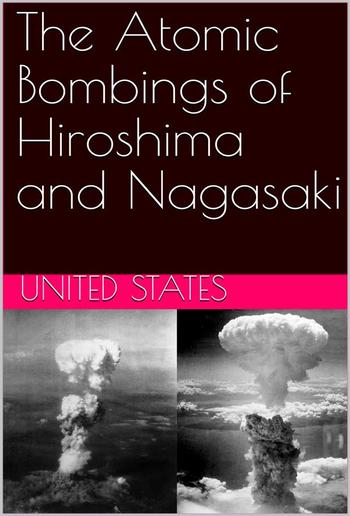
United States. Army. Corps of Engineers. Manhattan District - The Atomic Bombings of Hiroshima and Nagasaki
The Atomic Bombings of Hiroshima and Nagasaki
United States. Army. Corps of Engineers. Manhattan District
Description
The cover image of this book has been taken from rare and real "Two aerial photos of atomic bomb mushroom clouds, over two Japanese cities in 1945"
During the final stage of World War II, the United States detonated two nuclear weapons over the Japanese cities of Hiroshima and Nagasaki on August 6 and 9, 1945, respectively. The United States dropped the bombs after obtaining the consent of the United Kingdom, as required by the Quebec Agreement. The two bombings killed 129,000–226,000 people, most of whom were civilians. They remain the only use of nuclear weapons in the history of armed conflict.
In the final year of the war, the Allies prepared for what was anticipated to be a very costly invasion of the Japanese mainland. This undertaking was preceded by a conventional and firebombing campaign that destroyed 67 Japanese cities. The war in Europe had concluded when Germany signed its instrument of surrender on May 8, 1945. As the Allies turned their full attention to the Pacific War, the Japanese faced the same fate. The Allies called for the unconditional surrender of the Imperial Japanese armed forces in the Potsdam Declaration on July 26, 1945—the alternative being "prompt and utter destruction". The Japanese rejected the ultimatum and the war continued.
By August 1945, the Allies' Manhattan Project had produced two types of atomic bombs, and the 509th Composite Group of the United States Army Air Forces (USAAF) was equipped with the specialized Silverplate version of the Boeing B-29 Superfortress that could deliver them from Tinian in the Mariana Islands. Orders for atomic bombs to be used on four Japanese cities were issued on July 25. On August 6, one of the modified B-29s dropped a uranium gun-type bomb codenamed "Little Boy" on Hiroshima. Three days later, on August 9, a plutonium implosion-type bomb codenamed "Fat Man" was dropped by another B-29 on Nagasaki. The bombs immediately devastated their targets. Over the next two to four months, the acute effects of the atomic bombings killed 90,000–146,000 people in Hiroshima and 39,000–80,000 people in Nagasaki; roughly half of the deaths in each city occurred on the first day. Large numbers of people continued to die from the effects of burns, radiation sickness, and other injuries, compounded by illness and malnutrition, for many months afterward. In both cities, most of the dead were civilians, although Hiroshima had a sizable military garrison.

